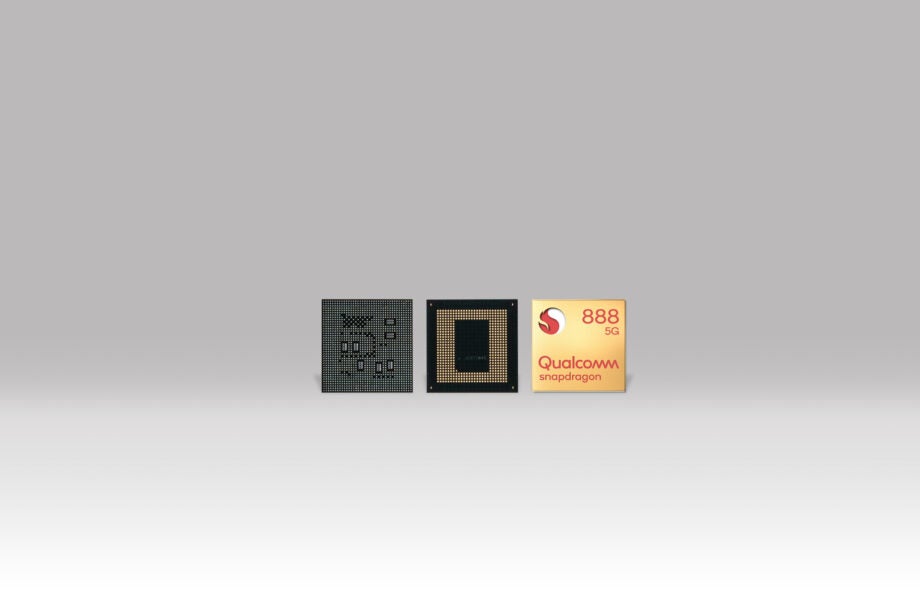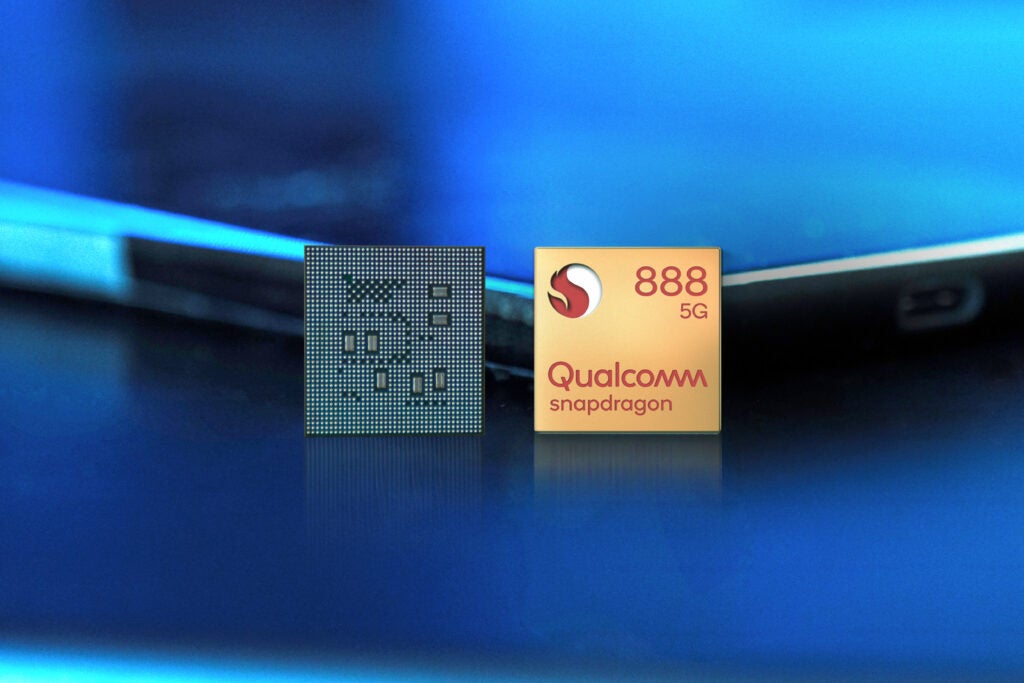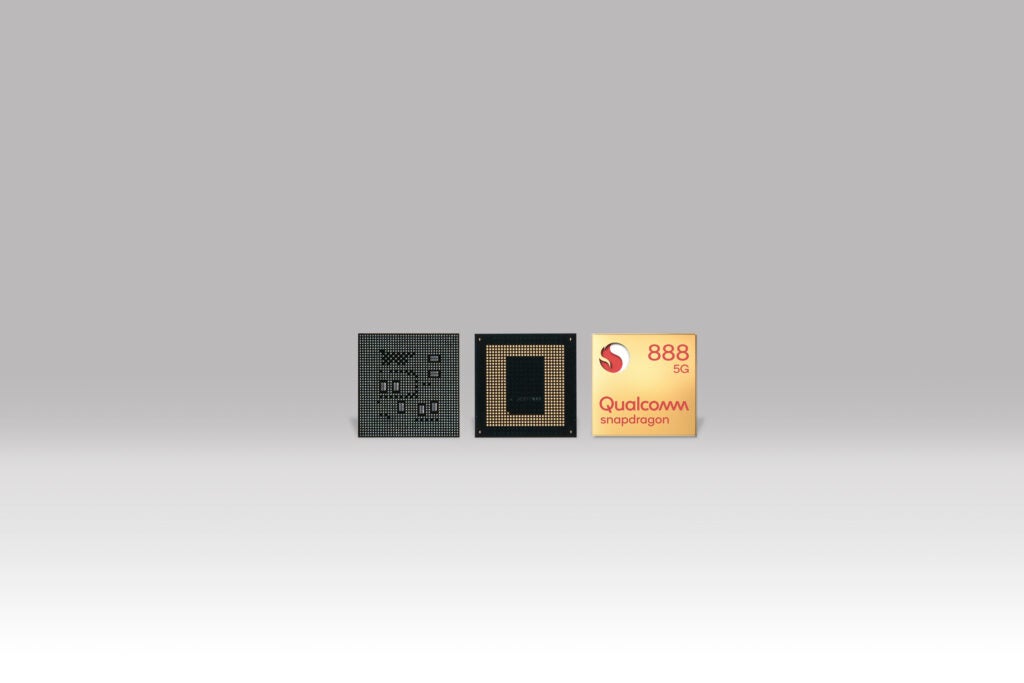Qualcomm Snapdragon 888: Performance, 5G upgrades and phones

The Snapdragon 888 will be the next flagship chipset from Qualcomm. The 888 takes the place of the heavily-rumoured Snapdragon 875 that was expected to power the next generation of flagship handsets in 2021. Here’s what we know about the platform so far.
Qualcomm usually announces its big end of year launch in a lavish hotel on a beach in Hawaii. Of course, things were a little different this year what with the ongoing pandemic, forcing the launch to move online for 2020. Don’t let that give you the impression Qualcomm hasn’t got anything to announce though, because it very much has.
While most rumours led us to believe we’d see the Snapdragon 875 take the mantle of the 865 this year, we now know that the successor will be the Snapdragon 888.
This is arguably the most important chipset release of the year, as it’ll go on to power most of the big flagship devices from Sony, LG, Oppo, Xiaomi and more. The chip is Qualcomm’s answer to the competing Apple A14 Bionic you’ll find inside the iPhone 12 and Kirin 9000 that powers the Huawei Mate 40 Pro.
The latest news comes in the form of benchmarking tests provided by Qualcomm, showcasing the performance of the new chipset. Usually, Qualcomm would invite third-party reviewers to experience the platform hands-on but, due to the current circumstances, this hasn’t been possible this year. You can see Qualcomm’s benchmarking results in the performance section below.
Here’s everything we know about the platform, including specs, rumoured and confirmed phones and performance.
Related: Best phones
Qualcomm Snapdragon 888 performance, specs and features
One of the biggest advances people expect from a new flagship chipset is a performance boost. And while the 888 is far more than a simple jump in speed for 2021 phones, it packs some tempting upgrades in this area.
The Kryo 680 generates 25% more performance (according to Qualcomm, we’ll have to do our own tests when we start getting units) and supports up to 2.84GHz. It’s also the first commercial CPU based on the Arm Cortex-X1. There are strides in the GPU performance too, with the Adreno 660 offering a 35% boost compared to the outgoing version. Qualcomm has also said both the CPU and GPU will sustain this performance over extended periods of time.
The Snapdragon 888 Mobile Platform packs the new X60 5G modem for global mmWave and sub-6GHz 5G coverage across all major bands. This modem boasts support for WiFi 6, Bluetooth 5.2 and aptX. Qualcomm is claiming you’ll be able to theoretically achieve the fastest consumer speeds of any 5G chip here, with up to 7.5Gbps.

Roaming is key too, and Qualcomm states the Snapdragon 888 is ‘unique’ in supporting global 5G multi-SIM for international roaming along with managing both work and personal numbers on the same phone.
There’s also a new AI engine (the 6th-generation AI engine, to be precise) with improved performance and efficiency and a whole load of gaming enhancements thanks to the new Adreno GPU. These include variable rate shading (VRS) on mobile devices for the first time and Qualcomm’s Quick Touch for increasing responsiveness up to 20%.
Computational photography is everywhere and it’s improving the snaps you take on all kinds of devices. With the Snapdragon 888 and its Spectra 580 ISP, phones will be able to capture up to 120, 12MP snaps per second – that’s 37% faster than before. You’ll also be able to record three streams of 4K HDR concurrently and shoot in the 10-bit HEIF format.
More recently, Qualcomm ran the chipset through a series of synthetic industry benchmark tests to showcase its CPU, GPU and AI performance.
Unfortunately, due to the current circumstances, Qualcomm was unable to invite third-party reviewers to have a hands-on experience with the chipset. For this reasons, the results shared come from the company’s own tests using industry benchmarks.
You can see the results collected by Qualcomm below. The tests were run on a Snapdragon 888 reference design and the results are the average of three iterations, though we’ll have to wait until we get our hands on review units to run our own tests.

“Creating premium experiences takes a relentless focus on innovation. It takes long term commitment, even in the face of immense uncertainty,” said Cristiano Amon, president, Qualcomm Incorporated “It takes an organization that’s focused on tomorrow, to continue to deliver the technologies that redefine premium experiences.”
Qualcomm Snapdragon 888 phones – when will they be released?
Expect to see phones shipping with the Qualcomm Snapdragon 888 arrive very soon, likely in the first few months of 2021.
During the keynote reps from the likes of Verizon, Sony, OnePlus and Xiaomi appeared and there were many teases about what this new chip could add to upcoming flagship phones in 2021.
Xiaomi announced the Mi 11 at the Tech Summit, the brand’s next flagship phone that’ll be powered by the Snapdragon 888.
“Snapdragon 888 is the most powerful mobile platform from Qualcomm Technologies ever. In addition to the industry-leading 5G connectivity, it has brought groundbreaking breakthroughs and innovations in AI, gaming and camera. I’m glad that our new flagship smartphone Mi11 will be one of the first devices with Snapdragon 888″ said Lei Jun, Founder, chairman and chief executive officer of Xiaomi.

We’ve also heard confirmation that Oppo’s next Find X flagship (likely the Find X3) will sport the chip, as will an upcoming Realme device. Interestingly, Motorola has said it will launch a G-series phone with the chip next year. The Moto G line usually full of budget phones, so this would be an interesting change of direction.
Qualcomm also said many other OEMs provided support for the Snapdragon 888 platform, including Asus, Lenovo, Vivo and ZTE.


